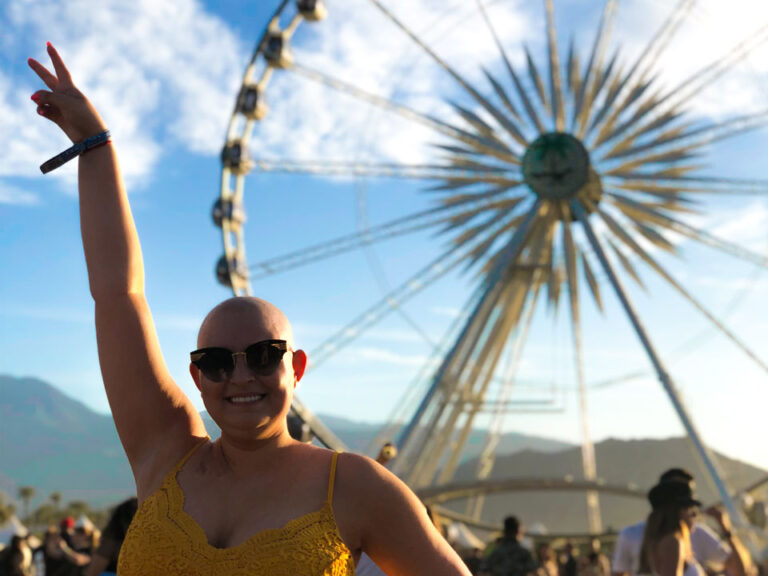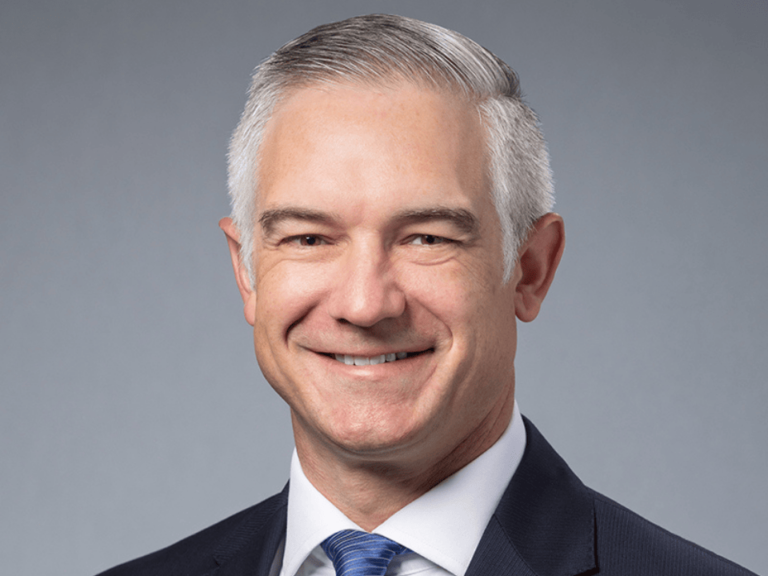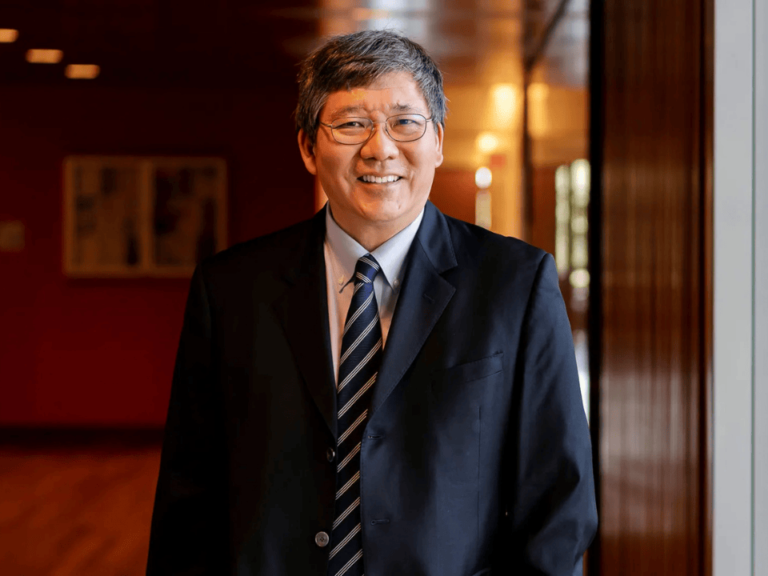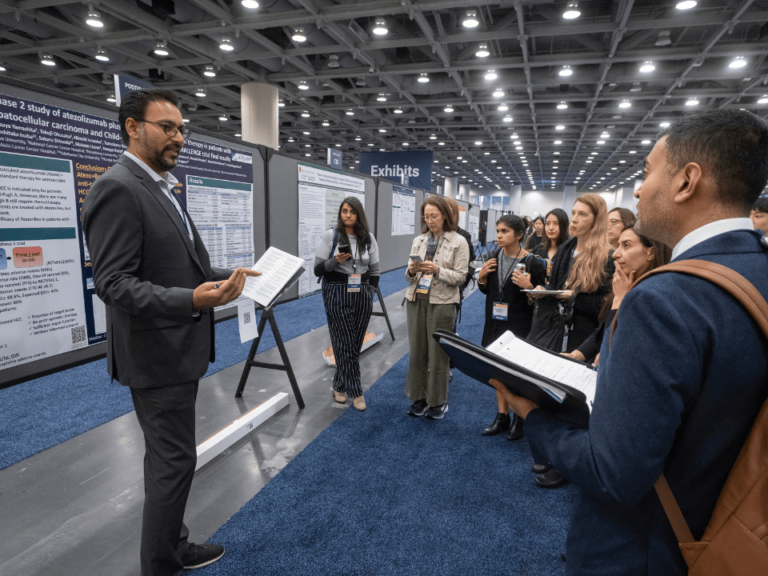The leaders of a research consortium that advocates computed tomography scanning to detect early-stage lung cancer have built an estate of 27 patent applications worldwide covering technologies and methods of screening.
According to publicly available databases, the leaders of the International Early Lung Cancer Action Project are listed as inventors on patent applications and one issued U.S. patent that cover innovations in lung cancer screening, from clinical trial methodology, to software for interpretation of scans, to technology of biopsy needles.
The first of these patent applications was submitted on April 11, 2000. In the U.S., group leaders are listed as inventors on one patent and 10 published applications. At least one of the inventions has been licensed by General Electric, a maker of CT scanners, and, in another instance, patent rights were reportedly exchanged for stock of a start-up company that markets lung biopsy devices.
Disclosure statements that accompanied the publications by the group’s leaders didn’t reflect these activities as potential conflict of interest, a literature search shows. A review of PubMed shows that Claudia Henschke, the I-ELCAP principal investigator and an inventor on the issued U.S. patent and most of the patent applications, has published 84 papers since April 11, 2000. Henschke’s collaborator David Yankelevitz, who is listed as an inventor on the issued U.S. patent and all the patent applications, figures as an author on 61 publications during that time. Disclosure was found on two publications, both by Yankelevitz as a single author.
Some scientific journals specifically require disclosure of relevant patent applications. Others expect to be told about all potential conflicts, leaving it to the editors to decide what’s relevant to the publication. One group of journals, Nature, asks for disclosure of patent applications and urges authors to avoid “any undeclared competing financial interests that could embarrass you were they to become publicly known after your work was published.”
To deal with the variability of standards, many researchers and journal editors say they err on the side of disclosure. The Cancer Letter asked several experts familiar with I-ELCAP publications to review a table listing the patents.
—“If I were involved in these studies, I would have certainly reported this, not only to the journals, but these investigators do a lot of public speaking, and I think this should be disclosed publicly to audiences,” said Patricia Rivera, a pulmonologist and associate professor of medicine at the University of North Carolina, after reviewing the document, which appears on page 3.
—Gerard Silvestri, a pulmonologist at the Medical University of South Carolina, said he would have disclosed analogous intellectual property claims in his publications and lectures. “In the course of submitting an article for publication to most journals, and while speaking at national and international meetings, I would have been required to disclose this information,” Silvestri said. “As to your question of whether these particular patents appear to be related to the work performed by I-ELCAP, they certainly appear to be.” Silvestri is a member of the data and safety monitoring board of the NCI-sponsored Prostate, Lung, Colorectal and Ovarian Cancer Screening Trial, and a co-author of the screening guideline of the American College of Chest Physicians, which recommends against routine CT screening of former smokers.
—“Based on the limited information that you provide, I believe that several of these patents are probably related to I-ELCAP publications, and therefore constitute a potential conflict of interest, and should have been disclosed,” said Michael Gould, a pulmonologist at Stanford University, whose research interests include technology assessment and lung cancer screening.
—“It seems to me that the studies of screening should mention that there are patents by the authors, and the studies of lung biopsies should mention the patents in these areas, especially if the journals have patents in their disclosure requirements,” said Paul Bunn, a lung cancer expert and director of the University of Colorado Cancer Center. “If the authors have received consulting fees from the companies that manufacture the equipment, this should, of course, be disclosed as well. If the authors have stock in the companies that make the equipment, or serve on advisory boards, this should also be disclosed.”
—“Patents about process of the early detection and interpretation of spiral CT-detected lung nodules are directly relevant to I-ELCAP publications,” said Steven Woloshin, a senior research associate in the Veterans Affairs Outcomes Group, White River Junction, Vt., and associate professor of medicine and of community and family medicine at Dartmouth Medical School. “They should be disclosed, because patents represent a direct financial conflict of interest to the holder,” Woloshin said.
I-ELCAP leaders have been more politically active—and more visible—than ordinary developers of devices and software used in diagnostic radiology. Working with the Lung Cancer Alliance, a patient advocacy group that has received some funding from GE, they have been campaigning to change healthcare policy to include their controversial brand of cancer screening.
In one of its most visible papers, in the Oct. 26, 2006, issue of The New England Journal of Medicine, I-ELCAP claimed that its case series had produced 94 percent 10-year survival among patients with stage I lung cancer. However, no major medical society accepts this finding as a reliable justification for screening. The American College of Chest Physicians, for example, recently recommended that such screening be limited to “well-designed clinical trials with appropriate human subjects protections.”
As they spar with skeptics, I-ELCAP scientists work closely with LCA, a group that advocates for screening former and current smokers in accordance with I-ELCAP protocols.
Last year, a bill in the U.S. Senate sought to establish a pilot project at the Centers for Disease Control and Prevention that would direct patients to I-ELCAP protocols, paying for their scans, and sending the data to the New York-based research group (The Cancer Letter, Sept. 14, 2007).
I-ELCAP received money from the New York City settlement paid by tobacco companies. Proponents of screening have been lobbying state legislatures to mandate similar arrangements to cover screening based on I-ELCAP protocols.
Sources said that LCA and other advocates of screening had prompted the Subcommittee on Oversight and Investigations of the House Committee on Energy and Commerce to investigate alleged conflicts of interest on the part of scientists involved in the NCI-sponsored National Lung Screening Trial, a $200 million study designed to determine whether CT screening produces a mortality advantage over chest radiographic screening (The Cancer Letter, Oct. 26, 2007).
Recently, LCA and I-ELCAP leaders met with NCI Director John Niederhuber to present a proposal to pool the interim results of ongoing randomized trials with those of the single-arm I-ELCAP study. Henschke was present at that meeting, sources said (The Cancer Letter, Nov. 16, 2007).
“I believe that the authors of papers, talks and presentations—people making public claims of truth—need to disclose any and all relevant commercial relationships they have regarding the products or services they are talking about,” said Eric Campbell, associate professor at Harvard Medical School and Massachusetts General Hospital, who studies the relationships between drug companies, doctors, and the Institutional Review Boards.
“I think patent applications should be disclosed,” Campbell said. “If it were me, I would have disclosed this.”
Political activity intensifies the need for disclosure, Campbell said. “For example, if I wrote a paper about the role of voluntary health agencies in caring for the poor and the impact of federal funding on that activity, I would need to disclose the fact that I serve on the board of a nonprofit agency that provides health care in foreign countries,” Campbell said. “Even though it has nothing to do with making money, I would disclose it. You have to disclose your interests that are related to the topic you are talking about that have the potential or the perceived potential to influence what one says.”
The Cancer Letter submitted a list of questions to Henschke, Yankelewitz and their institution, but the answers weren’t received by deadline.
Collaboration With GE
Both GE and Cornell declined to disclose the details of a licensing agreement covering Henschke’s and Yankelevitz’s inventions.
“We do have a license agreement with the Cornell Research Foundation for certain CT lung cancer patents,” Corey Miller, a spokesman for GE Healthcare Americas, said to The Cancer Letter.
“The researchers—Henschke and Yankelevitz— have received some royalty payments from GE for a computer algorithm equation that they developed to detect lung cancer on diagnostic scans,” Miller said. “That is, as far as I know, the extent of our relationship with those two.”
According to documents posted on Cornell’s website, inventors at the institution receive a third of the royalties and additional research support when their intellectual property is licensed. The policy is posted at http://www.policy.cornell.edu/cm_images/uploads/ pol/Patent.html.
Miller declined to disclose the date the licensing agreement was made. “The specific details and terms of any GE licensed patents or patent licensing agreements are regarded as proprietary and confidential,” he said.
The inventions appear to stem from a collaboration between GE and Weill Cornell scientists. The effort, described in a 2002 Cornell in-house newsletter, “involves the accurate measurement of pulmonary nodules observed on high-resolution CT scans.”
The newsletter continues:
“The image processing creates three-dimensional reconstructions so that volumetric determinations can be made; with these accurate volumes measurements, we now can compare nodules on scans obtained at different times to determine accurate growth rates. This approach is particularly well suited to the evaluation of small nodules observed during CT screens, and the whole team worked to convert it into a product in the General Electric Advanced Lung Application Software. The collaboration with General Electric is extending to the development of new software that actually can detect nodules on a CT scan and act as a second read for radiologists.”
The newsletter is posted at http://www.nypcancer.org/prevention/issue6/lun_can.html.
Brian Kelly, head of the Office of Technology Development at Weill Medical College, declined to comment on the licensing arrangement. “That’s confidential information,” Kelly said to The Cancer Letter. “I don’t think I have anything to say.”
Documents show that the Cornell Research Foundation is pursuing worldwide patents for most of the inventions.
Changing Disclosure
In recent months, Yankelevitz’s disclosures have differed from publication to publication.
On June 7, 2007, in an editorial published in the Cleveland Clinic Journal of Medicine, he disclosed that he “owns stock and serves as a consultant for PneumRx corporation.”
The disclosure didn’t mention the patent application that appears to be the central element of Yankelevitz’s relationship with that company. The U.S. Patent and Trademark Office was first notified of that patent on Nov. 23, 2004. The official filing date was Nov. 23, 2005, and the patent was published by PTO on July 27, 2006.
The application, which lists Yankelevitz as an inventor, covers a “steerable device for accessing a target site and methods.” The patent is assigned to PneumRx, a Menlo Park, Calif., start-up company, which was incorporated in 2004, and which, according to information on its website, produces joystick-operated biopsy needles.
Yankelevitz’s Cleveland Clinic journal editorial, titled “Perhaps It Is Time for a Change in Policy on Lung Cancer Screening,” responds to criticism of I-ELCAP’s work and cautions against reliance on randomized controlled trials.
Documents show that at the time the editorial was published, all the 27 patent applications that list Yankelevitz as an inventor had been on file with PTO and corresponding patenting agencies worldwide, and all but two had been published by these authorities.
A month after the editorial appeared in the Cleveland Clinic journal, the American Cancer Society’s journal Cancer Cytopathology published a paper titled “Reliability of Cytologic Diagnosis of Early Lung Cancer,” written by a group of scientists that included Yankelevitz and Henschke.
The paper concluded that “preoperative diagnosis of lung cancer by screening with [high-resolution computed tomography] could be reliably made by [fine needle aspiration.]”
The paper didn’t disclose that Yankelevitz figures as an inventor of an improved method of taking a biopsy as well as an inventor on a patent or patents related to CT screening. Henschke’s potential conflicts, too, weren’t noted.
The journal requires its authors to sign a disclosure statement certifying that “any affiliations with or involvement… in any organization or entity with a direct financial interest in the subject matter or materials discussed in the manuscript are noted below (e.g. employment, consultancies, stock ownership, honoraria, expert testimony, etc.)” had been disclosed to the editors.
“Otherwise, my signature indicates that I have no such financial interest,” the statement reads.
Contacted by The Cancer Letter, ACS officials checked the journal’s files, but found no disclosure.
“The ACS is concerned about conflicts of interest and the appearances of possible conflicts of interest of contributors to its journals,” said Len Lichtenfeld, the society’s deputy chief medical officer. “We have an established policy mandating all conflicts or appearances of conflict be disclosed. These disclosures are taken into account in the editors’ decision to publish, and are always disclosed to readers in the article.
“We are not aware of any disclosures by the authors of the paper in question. We will query the authors about the information provided us by The Cancer Letter.”
Additional information about Henschke’s and Yankelevitz’s patents emerged on Oct. 8, 2007, in a blog entry by David Armstrong, a reporter for The Wall Street Journal:
“Yankelevitz owns shares in and consults for PneumRx, a company that makes needles used to biopsy suspected cancer tissue in the lung. The company would likely benefit from any uptick in screening as further tests are ordered. PneumRx CEO Erin McGurk says Yankelevitz was given stock in exchange for licensing some intellectual property he had developed. Yankelevitz said he has consulted for PneumRx for about a year and a half but doesn’t consider the work to be a conflict because ‘it isn’t a screening company.’”
Armstrong wrote that Henschke told him that the deal with GE was made sometime after 1999 and that she informed the New England Journal about the agreement, but the journal chose not to disclose it. The story is posted at http://blogs.wsj.com/health/?s=Henschke&x=11&y=8.
PneumRx officials didn’t return calls from The Cancer Letter. Last March, the company raised $27 million in a private placement, to be used for development of two of its products, an adhesive sealant and a treatment for emphysema.
In January 2008, Yankelevitz’s disclosure changed again. This time, the journal Radiology published the following: “The author is a consultant for PneumRx (Mountain View, Calif.) and receives royalties from Cornell University from a licensing arrangement for patented technology with General Electric.”
Journals Reviewing Disclosures
While Yankelevitz’s disclosure underwent changes, Henschke’s remained the same. A disclosure accompanying her opinion piece in the August 2007 issue of Nature Clinical Practice Oncology reads: “The author declared that she has no competing interests.”
Linda Miller, executive editor of Nature and Nature Journals, said the journal’s records show that Henschke had made that disclosure by checking a box on a one-page statement submitted by all authors.
“There is nothing in the files that indicates that Dr. Henschke made a disclosure that was deemed irrelevant by a staff member,” Miller said in an e-mail. “We file and keep all copyright-CFI [competing financial interests] forms and copies of important e-mails in the office, and most other correspondence is stored in our electronic article tracking system.”
The authors of opinion papers are expected to disclose patent applications, Miller said. “The authors would be expected to reveal published patent applications whose value may be affected by publication of the paper,” she said. “We state this as clearly as possible, but one can never rule out misinterpretation entirely. We use the form that we do to try to make the process as simple as possible.”
Miller said the Nature Publishing Group editor of the journal, Lisa Hutchinson, planned to contact Henschke on Jan. 17 “and ask her to clarify whether she has any competing interests to declare.”
“We will publish a corrigendum if, in this case, our CFI policy has been breached,” Miller said. “NPG always takes allegations that its policies have not been adhered to seriously, and we look into each case. It is important to give all parties an opportunity to explain the situation from their point of view before jumping to any conclusions. We value transparency for our readers in matters of competing interests and advise authors to err on the side of being more transparent than they think necessary to avoid any embarrassments that may arise after the fact.”
The journal’s conflict of interest statement notes that the responsibility for monitoring the researchers’ conduct ultimately lies with their employers. “Where we believe trust has been significantly compromised by an author’s actions,…we will seek to redress the matter by an appropriate combination of sanctions and communications to readers and employers.”
The Weill Medical College conflict of interest policy states that disclosure is “the initial step, and in many cases the most important component, in the management of potential conflicts of interest or the appearance thereof.”
The policy also seeks to “require disclosure of potential conflicts of interest in publications and presentations and, it is the policy of the IRB, to require disclosure in the Informed Consent Document or process.”
The Cancer Letter contacted the following journals which published Henschke’s and Yankelevitz’s papers and letters: Cancer Cytopathology, Nature Clinical Practice Oncology, The Lancet, Chest, The New England Journal of Medicine, Clinical Cancer Research, JAMA and the Archives of Internal Medicine.
“Our editors are in the process of investigating this matter,” said Jennifer Zeis, a spokesman for the New England Journal of Medicine. “I assure you that we take our conflict of interest policy very seriously, and will pursue any failures to disclose.”
Clinical Cancer Research, a journal published by the American Association for Cancer Research, didn’t acknowledge having received the questions and didn’t respond in time for publication. “We have had disclosure policies in place for a long time, and we are constantly improving those disclosure policies,” said Jennifer Stawarz, a spokesman for American College of Chest Physicians, which publishes Chest. “And I just ask that you review that policy again. And at this time we don’t feel it’s appropriate for us to say anything else.”
JAMA and the Archives of Internal Medicine declined to discuss the specifics of the authors’ disclosures.
“I checked with the editors regarding your questions, and their response is that all pertinent disclosures are published with the articles,” said Jim Michalski, a spokesman for JAMA and Archives publications. Michalski declined to answer further questions.
In a letter published in the Aug. 7, 2007, issue of JAMA, Henschke, Yankelevitz, and two others disputed the findings of an earlier paper that questioned the benefit of screening claimed by I-ELCAP. The financial disclosure line read: “None Reported.”
At that time, all but two of the 27 patent applications would have been published by patent authorities worldwide.
Similarly, no conflicts were disclosed in an original research paper published by JAMA on July 12, 2006. In the study, I-ELCAP compared data from CT screening of men vs. women, concluding that women have a higher susceptibility to tobacco carcinogens. Henschke is listed as the corresponding author on the paper. At the time the paper was published, Henschke was listed on 21filed patent applications worldwide, eight of them in the U.S.
JAMA’s policies require authors to disclose “patents filed, received, or pending.” According to Michalski, the disclosure “None Reported” usually means that the authors had checked off an appropriate box on the standard disclosure form. The wording on patents first appeared in the JAMA forms in 1998, Michalski said. According to a correction issued in an unrelated case where an author’s undisclosed financial interests came to light, JAMA’s top editors wrote that since the late 1980’s “our policy has required complete disclosure of all financial interests and relationships and all affiliations relevant to the subject matter discussed in the article” (JAMA, Aug. 9, 2006).
In the July 5, 2005, issue, JAMA editors wrote that “for all accepted manuscripts, each author’s disclosures of relevant financial interests or declarations of no relevant financial interests will be published.”
According to the editorial, “decisions about whether financial information provided by authors should be published, and thereby disclosed to readers, are usually straightforward. Editors are willing to discuss disclosure of specific financial information with authors, but the JAMA policy is one of complete disclosure of all relevant financial interests.”
The Archives of Internal Medicine currently requires authors to disclose “patents received or pending.” However, Michalski, the spokesman for the journals, was unable to state how long that requirement has been in place.
On Feb. 13, 2006, the Archives published an I-ELCAP paper titled “Computed Tomographic Screening for Lung Cancer,” which claimed to provide “direct evidence of a stage-size relationship” in a population of 28,689 people screened by the research group. The paper, written by a committee that included Henschke and Yankelevitz, stated that the authors had made no financial disclosure.
Merrill Goozner, director of the Integrity in Science Project of the Center for Science in the Public Interest, said many of the patents in question are directly relevant to the publications by I-ELCAP and its leaders. This includes the JAMA and Archives publications as well as the October 2006 paper in the New England Journal of Medicine, he said.
“Disclosure has long been the preferred method for managing conflicts of interest in medical research,” Goozner said. “Peer reviewers and journal readers need accurate conflict of interest disclosure statements to be on the alert for the possibility that commercial biases influenced the construction of a study or the interpretation of its results.
“Since these pending patents are clearly relevant to the subject matter of the letter and article, they should have been declared as conflicts of interest.”
“Up In Smoke” Revisited
Six years ago, The Lancet published a paper claiming that then-New York Mayor Rudolf Giuliani wasn’t making a good use of public money when he tapped the city’s tobacco litigation proceeds to fund CT screening by Henschke’s group.
The paper, “Tobacco Money: Up In Smoke?” prompted two separate responses from the proponents of the $10 million project. The first response, published on Dec. 14, 2002, was signed “NY-ELCAP investigators,” and contained no disclosure. According to patent documents, at that time, 10 patent applications had been filed worldwide.
The second response, signed by Henschke, appeared on March 29, 2003. According to patent documents, at that time, 11 patent applications naming Henschke as an inventor were on file.
“At the time the letters in question were submitted, authors were asked to declare any conflicts of interest when returning their proofs,” Sabine Kleinert, the journal’s senior executive editor, said in an e-mail to The Cancer Letter. “If a conflict was declared, it was published at the end of the letter text. If nothing was declared, it was taken to mean that there was no conflict and no statement was printed.
“In this instance, no declaration was printed, indicating that no declaration was received by us. However, we have not had sufficient time to retrieve the appropriate filing from storage to check whether a declaration was in fact provided and mistakenly not printed.
“Current processes require authors to supply a statement for publication whether or not there is a potential conflict of interest—i.e., if there is none, authors are required to state ‘We declare that we have no conflict of interest.’”
Dartmouth’s Woloshin, one of the authors of “Up in Smoke,” said he was unaware of Henschke’s inventions at the time.
“The Lancet—along with most major general medical journals—requires disclosure of patents and patent applications in both articles and letters,” he said.
“Henschke’s response to our paper should have included such disclosures.”












